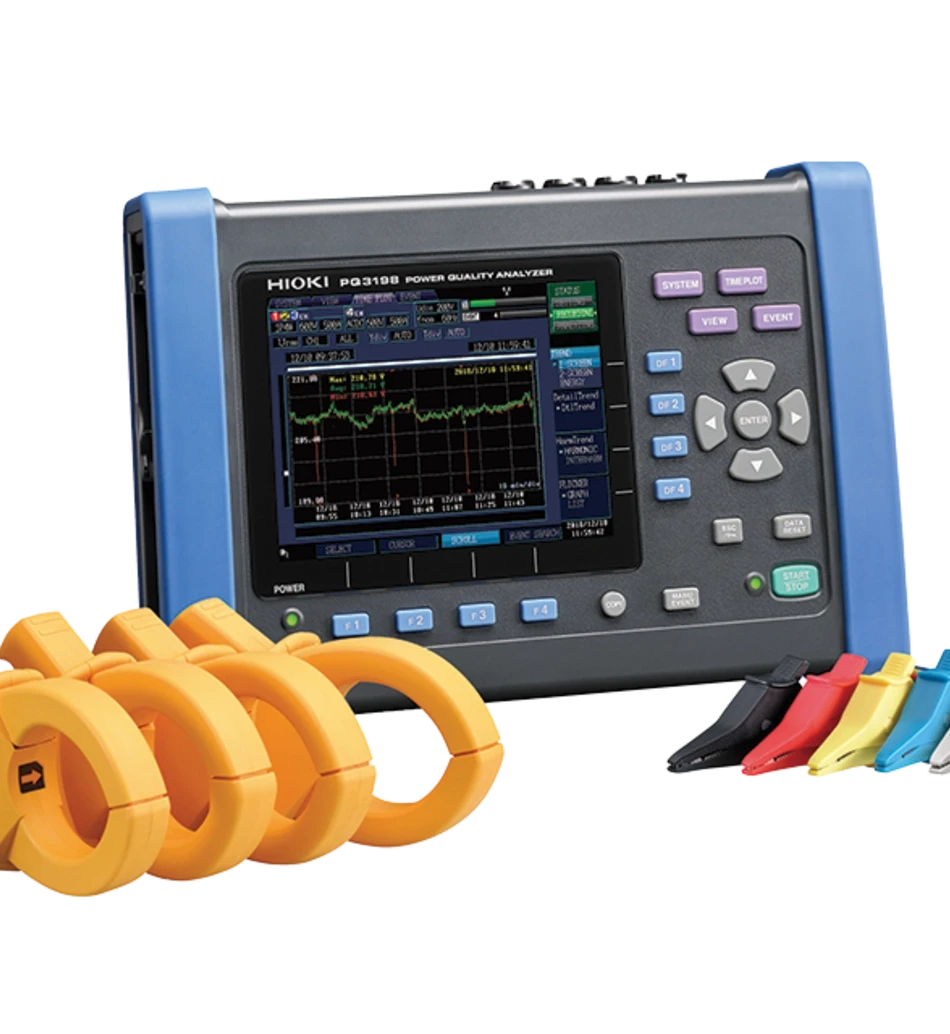Healing the power

When overly used, electrical power becomes increasingly fragile and its quality less and less reliable.
The Japanese company HIOKI’s constantly evolving, innovative instruments are capable of diagnosing disorders and identifying their cause.
Whenever we press a button on our PC or our television, we know what happens: thanks to the electricity network, the device turns on and stays on until switched off. The reality, however, is obviously much more complex. Electricity is neither static nor homogenous, its quality may vary and have a host of defects and shortcomings.
In general, power quality is continually decreasing, due to the exponential growth in numbers of electronic devices and the increasing frequency of large spikes in demand, such as furnaces or rectifiers. Energy sources have been diversifying (solar, wind, fuel cells, etc.) and becoming increasingly dispersed geographically.
Therefore, grids have become more complex, which makes power distribution more complicated. Moreover, as electric devices require less and less energy, they become more sensitive to disturbances (power cuts, radiation).
Disruptions and breakdowns due to poor power quality affect end users just as much as power suppliers. It is often difficult to know whether the cause comes from one side (inside a building for example) or the other (the power grid).
Innovators have not been sitting on their hands and HIOKI is one of the companies offering solutions for power quality measurement.
The Japanese company launched its first Power Quality Analyzer in 2001 and has been providing more and more sophisticated models. Currently, it offers two models: the mid-range PQ3100, launched in late 2016 and the new flagship PQ3198, launched this year.
The new device is marketed for approximately 4,600 euros in Japan, where HIOKI is hoping to sell a thousand a year. The PQ3198 monitors and records power supply anomalies and assesses power sup-ply problems. It is targeted for utilities, electrical contractors, energy consultants, telecom, building facilities management, factories and manufacturing facilities.
Compared to its predecessor, highlights HIOKI, the PQ3198 makes recording and analysis of power supply issues even more simple. Amongst the improvements, it is able to supply power – via its LEMO connectors – to AC flexible sensors and AC/DC sensors. You no longer need dedicated cables, which reduces space requirements and makes it possible to use in outdoor locations where power isn’t available. It can measure power and efficiency on two circuits simultaneously, for example the input and output of a solar power system.
Its data is accessible at a distance via an FTP server. It is capable of recording 9999 events (breakdowns, irregularities), which is ten times more than its predecessor and gives a comprehensive overview of the situation.
The PQ3198 complies with an international standard which specifies how power quality should be measured. This standard (reference number IEC61000-4-30) covers a broad range of phenomena: frequency, supply voltage amplitude, flicker, dip/swell/interruption of supply voltage, transient overvoltage, supply voltage unbalance, harmonic voltage, inter-harmonic voltage, rapid voltage fluctuation… The PQ3198 is in Class A, the highest level of precision and reliability, required for contractual applications or to verify compliance with standards.
HIOKI doesn’t only design devices controlling power quality. Founded in 1935 in the Nagano Prefecture, in Japan’s mountainous heart, the company has become a global leader in electrical measuring instruments. Its current range includes 200 main products: oscilloscopes, data loggers, battery and component testers, safety testers, probes and sensors, meters and multimeters, among many others.
Today, HIOKI employs a staff of almost 1000 in Asia, the Middle-East, Europe and the USA. You don’t need a high precision measuring device to prove the company’s success: sales have been solidly increasing, with over 210 million euros in 2018 (+11%).


